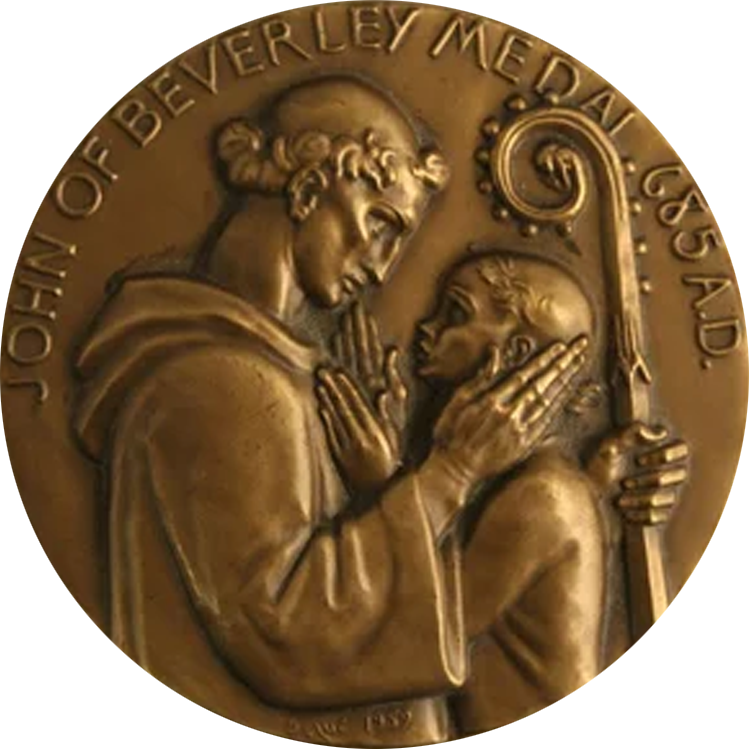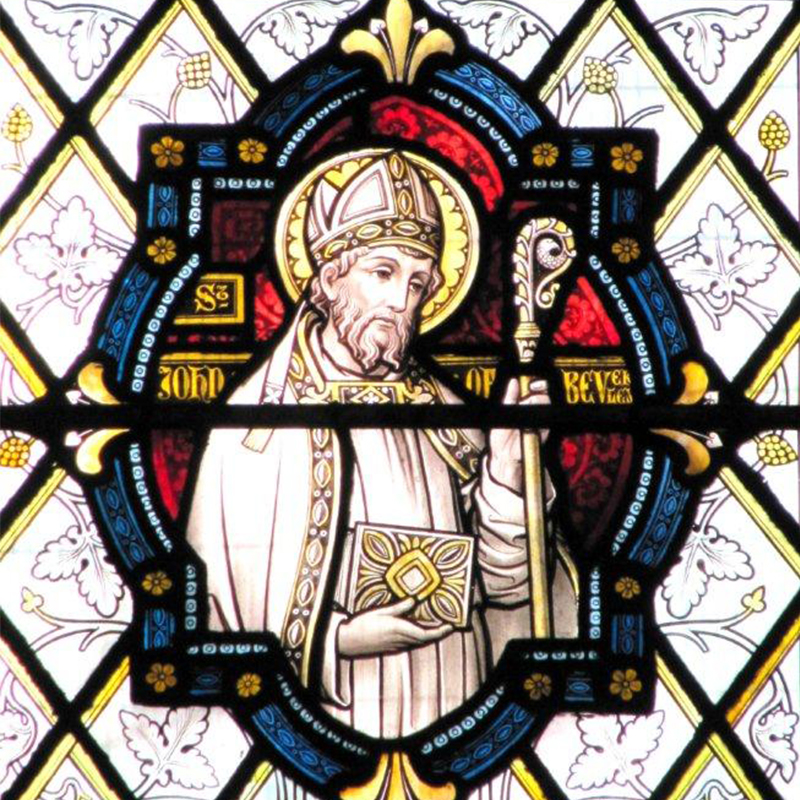
In 8th century England the East Yorkshire town of Beverley didn’t exist. Today, it is a vibrant market town of some 31,000 people.
It owes its foundation and growth to Saint John of Beverley who died on 7 May 721.
In 2021 we celebrated the 1,300th anniversary.

1. His life
Remarkably, we know quite a lot about John through the writing of the Venerable Bede. Bede (672–735) wrote the first history book of the English people just 10 years after John’s death. He knew John well, having been ordained by him. John himself was a member of the Whitby community under Abbess Hilda, one of the pioneers in establishing Christianity in the north of England, known then as Northumbria.
John went on to become the Bishop of Hexham (687-705) and Bishop of York (705-714).
It was during his time in York that he decided to establish a monastery. According to Bede he found a secluded site ‘in the wood of the men of Deira’ (the old name for East Yorkshire). Archaeology supports the view that the monastery was probably on the site of the present Minster church in Beverley. John retired to the monastery in 714. He died in 721 and was buried there in ‘the Chapel of St Peter.’
2. His reputation
Bede tells us that John was blessed with the gift of healing and he records many accounts of his miracles including the time he spent with a deaf and mute boy.
Bede wrote:
He cured a youth of dumbness, even though the boy had never uttered a single word. On the second Sunday of Lent, John made the sign of the cross upon the youth’s tongue, and loosed it.
Bede explained how John patiently taught the boy the alphabet.
He taught him to say “gea,” which signifies in Saxon Yea, then the letters of the alphabet, and afterwards syllables. Thus it was a combination of prayer, personal devotion and hard work that led the youth to miraculously obtain his speech.


3. Pilgrims and the growth of Beverley
Across the world there are many places where saints are buried and revered. One way of venerating saints is to make a pilgrimage to the site of their relics. Beverley became such a place. Together with Durham Cathedral, where both Bede and Saint Cuthbert are now buried, Beverley was considered a prestigious pilgrimage destination in the north of England.
Later centuries believed that Beverley grew in importance thanks to King Athelstan, the first king of all England. According to a 12th century chronicler, as the king was travelling north to Scotland, news reached him of the reputation of Saint John. Tradition has it that he visited the tomb and prayed for John’s intercession in winning the battle of Brunanburgh. In recognition, he is said to have given certain privileges to Beverley including the right of sanctuary.
4. A new building
The embryonic monastery set up by John in the 8th century grew into a larger community according to the results of an archeological excavation in 1979.
John’s sainthood was not formally recognised until 1037; nevertheless, his reputation attracted large numbers of pilgrims who provided the finance for more substantial buildings and in the early 12th century a start was made on a stone building in the new Romanesque style.
Disaster struck in 1188 when the church, and indeed much of Beverley, was ravaged by fire. No time was lost and in about 1190 a new building in the Gothic style was begun. This survives today as the eastern part of Beverley Minster.


5. John’s Shrine
Even before the 14th century nave of the church was built, an ornate shrine for John’s remains was commissioned in 1292 and a record of the specification survives:
For a silver-gilt shrine, made from gold and silver supplied by the Chapter, 5ft long, 1.5ft wide. Of proportionate height, beautiful, and adorned with plates and columns in architectural style with figures everywhere of size and number as the Chapter determine, and canopies and pinnacles before and behind, and other proper ornaments. Roger de Faringdon to remake any figure at the whim of the Chapter.
Beverley became a town offering hospitality to pilgrims and a place of sanctuary for fugitives. By 1377 it was immensely rich through the wool and cloth trade and was listed in the top 12 largest towns in England.
6. His influence
John’s influence continued to have an impact on the life of the country. Such was John’s reputation that most medieval kings visited Beverley to pay homage to John. These included King John, Edward I, Edward II, Edward III, Henry IV, Henry V, Henry VI and Edward IV.
Notable among these visits was that of Henry V who won the Battle of Agincourt on the Feast of Saint John’s translation (October 25). In 1421 the King visited John’s shrine to give thanks and made him one of the patron saints of the Royal family.

To find out more about the life and influence of Saint John of Beverley, the following books are available in the Minster Shop and to buy online.



The images
- The 12th century illustration is of Bede © British Library, Yates Thompson MS 26, f. 2r.
- The medal from 1959 illustrates John healing the boy.
- The 14th century sculpture shows John on the left and Athelstan on the right.
- The image of John from the Great West Window is by Hardman & Co, 1859-64
- The stained glass image of Bishop John, with a book in one hand and a crozier in the other, is by Hardman & Co, 1888
- Medieval stained glass in the Great East Window showing John on the right and Athelstan on the left.
